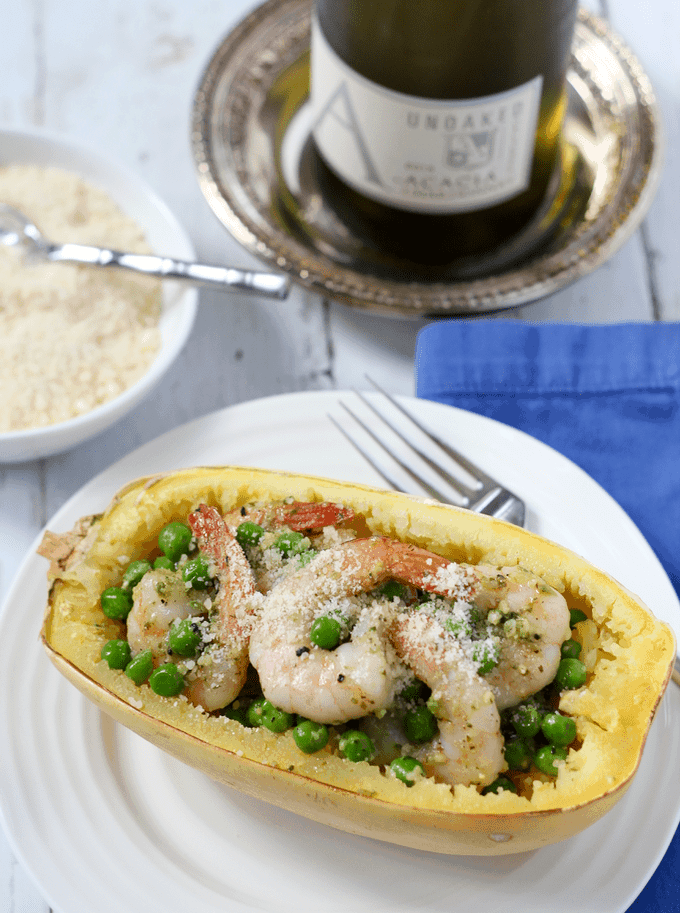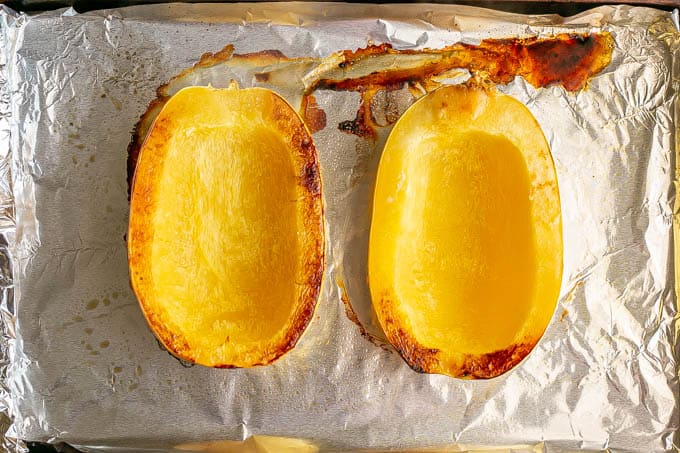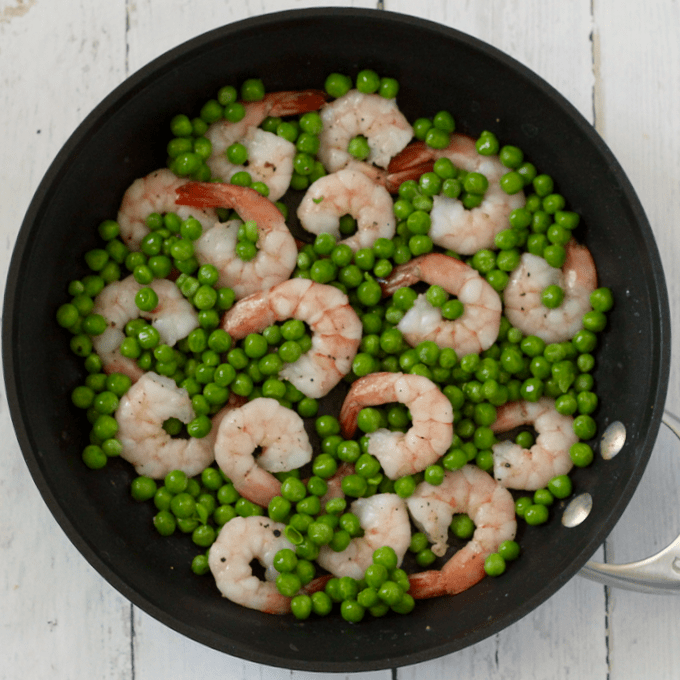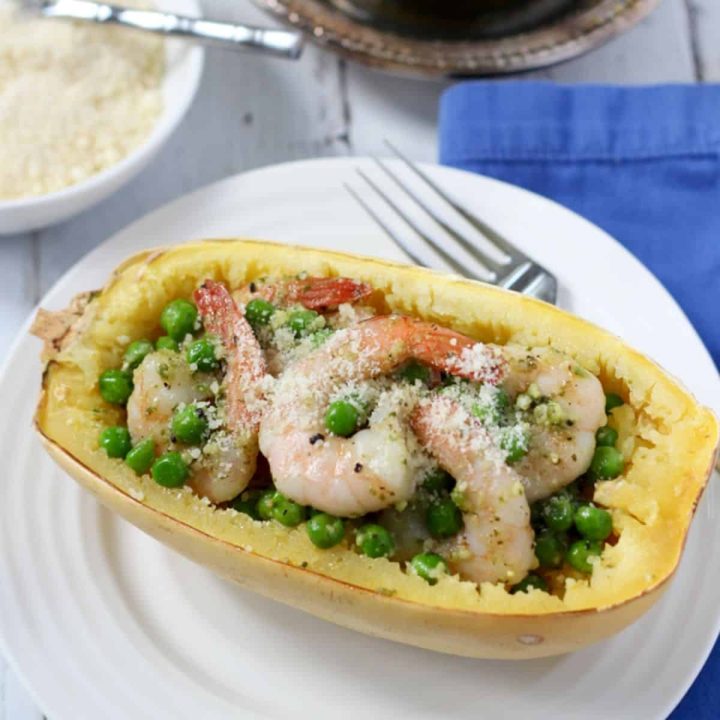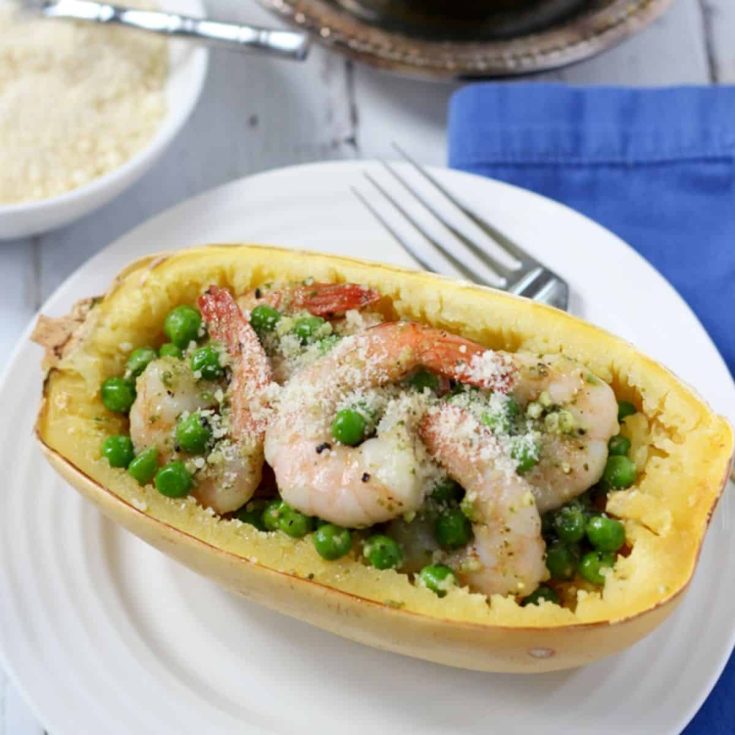Spaghetti squash is such a fun food. It’s just squash but once you roast it, it really does shred up like spaghetti strands. It has a very mild flavor, so it pairs well with lots of different foods and can be used as a substitute for pasta. It’s gained quite a following due to the low-carb craze. I don’t have a thing in this world against carbs. I eat them often and without a second thought. But I still love subbing this squash for a healthy dinner! And today’s recipe for spaghetti squash with pesto, peas and shrimp is just 4 ingredients. Yup, just the ones in the name! That makes for my kind of easy weeknight. Bonus - This is an easy dinner to whip together and takes advantage of some freezer staples – peas and shrimp – so it’s good for later in the week before you’ve had a chance to get back to the grocery store. It’s also low-carb and gluten-free. Still, as easy as it is, I’ve got a few tips and substitutions for you if needed. Feel free to scroll on down to the recipe card if you’d rather.
Ingredient Notes:
Spaghetti squash: You can bake the spaghetti squash in the oven, as directed in the recipe card below. Or you can make Instant Pot spaghetti squash or even microwave spaghetti squash to cook yours if you’d rather. Pesto: My homemade basil pesto is super easy to make, but a store-bought pesto works great, too. Peas: Frozen peas are one of my favorite freezer staples, but you could certainly substitute canned peas if needed. Shrimp: I use frozen shrimp, usually the 26-30 per pound size. You can substitute another size shrimp, but you’ll need to adjust your cooking time. The shrimp need to be completely thawed as well as peeled and deveined for this recipe. Please plan accordingly.
Tip: You can ask your seafood counter to prep these for you if needed. Or buy the deveined easy-peel frozen shrimp that are almost ready to go for you. You can leave the tails on the shrimp if you prefer. It adds some extra flavor while cooking, but can be a bit more fussy for eating. Up to you. OK, let’s tackle the intimidating part of working with spaghetti squash, cause I don’t want that to hold you back from using them.
Tips on cutting spaghetti squash:
– A sharp, large knife is a must. Did you know it’s more dangerous to use a dull knife than a sharp one? (See the pro tip below if you think your knife isn’t up to the job.) – Place the squash on a cutting board with the stem facing away from you. Insert your sharp knife in the middle of the spaghetti squash and pull the knife down through the spaghetti squash, holding it with your other hand at the stem to balance the pressure. – Once your knife has cut through this end of the spaghetti squash, remove it. Flip the squash around so the stem is now facing your body. Insert the knife where the previous cut finished and start to cut down. – Once you get close to the stem, you can often remove the knife and just pull the squash apart into two halves. Then you’re all set to scoop out the middles and get to roasting it. Pro tip: If your spaghetti squash is huge, your knife isn’t sharp, or you don’t want to bother with struggling to cut it, you can put the whole squash in the microwave on high for 3-4 minutes. That will help soften the skin just enough to make it easier to cut. (It doesn’t do enough to cook it to affect the cooking time.) And that’s it! Hopefully that makes it a little easier to handle your spaghetti squash. And I hope you give this easy recipe a try soon for a delicious dinner using some basic ingredients you can keep on hand. (If you do try this recipe, please leave a comment below or tag me on Instagram. I love hearing from you!) Enjoy! XO, Kathryn
Spaghetti squash: You can bake the spaghetti squash in the oven, as directed in the recipe card below. Or you can make Instant Pot spaghetti squash or even microwave spaghetti squash to cook yours if you’d rather. Pesto: My homemade basil pesto is super easy to make, but a store-bought pesto works great, too. Peas: Frozen peas are one of my favorite freezer staples, but you could certainly substitute canned peas if needed. Shrimp: I use frozen shrimp, usually the 26-30 per pound size. You can substitute another size shrimp, but you’ll need to adjust your cooking time. The shrimp need to be completely thawed (more on that in a minute) as well as peeled and deveined for this recipe. Please plan accordingly.
